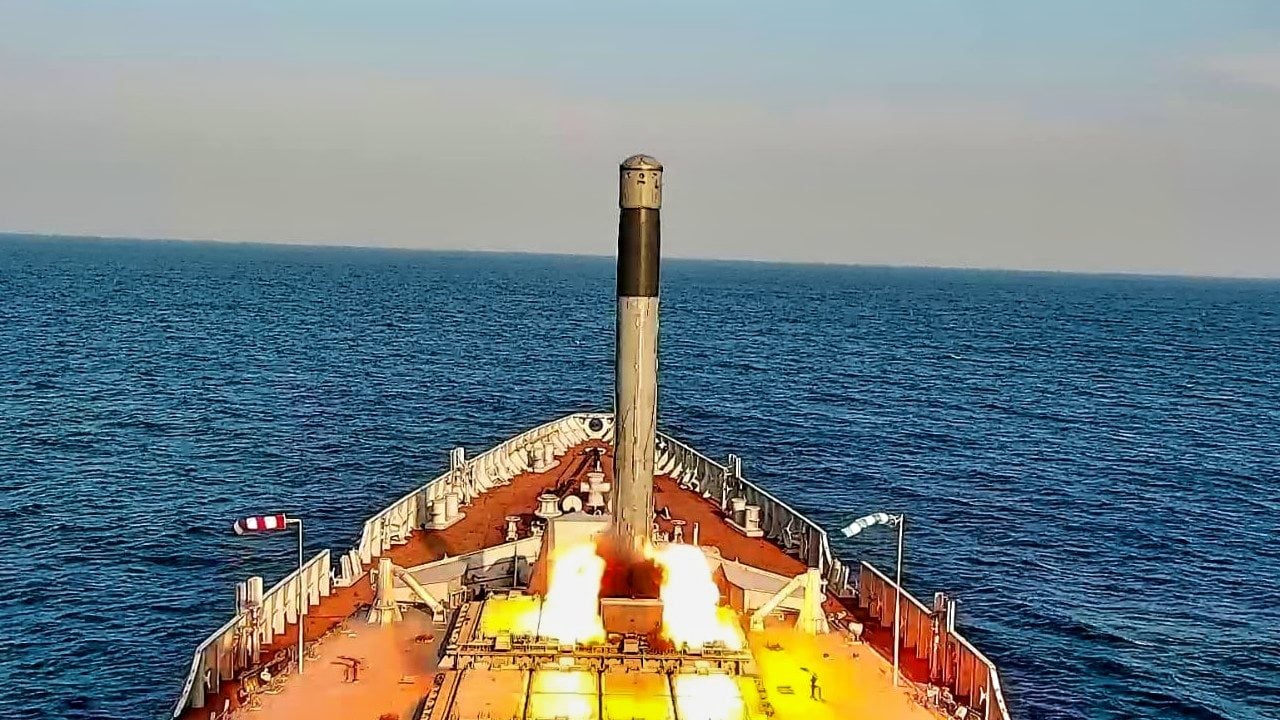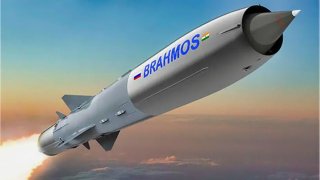BrahMos: The Mach 3 Supersonic Missile Russia and India Built Together
The BrahMos missile, a joint Indian-Russian development, is a two-stage supersonic cruise missile with a range of 290 kilometers.
Summary and Key Points: The BrahMos missile, a joint Indian-Russian development, is a two-stage supersonic cruise missile with a range of 290 kilometers.

-It features a solid propellant booster for initial acceleration and a liquid ramjet for sustained Mach 3 speeds.
-The missile's stealth, fire-and-forget capabilities, and versatility for land, sea, submarine, and air deployment make it a significant asset for India.
-Its high velocity, short flight time, and pinpoint accuracy enhance its effectiveness.
-India is exporting the BrahMos to allies like the Philippines to counter regional threats, particularly from China.
BrahMos Missile: India's Supersonic Defense Against Regional Threats
The BrahMos is an Indian two-stage supersonic missile developed in collaboration with Russia. The missile’s first stage is a solid propellant booster engine, which can accelerate the missile to supersonic speeds before being separated. The second stage is a liquid ramjet that can push the missile to its cruising speed of Mach 3. The BrahMos is also equipped with stealth features and guidance software.
The downside of the BrahMos is the missile’s range of just 290 kilometers, although it can reach that range quickly at supersonic speeds. The low flight time allows for “lower dispersion of targets, quicker engagement time and non-interception by any known weapon system in the world,” according to the BrahMos website.
Fire and Forget Missile
The BrahMos is a “fire and forget” munition – once the missile is fired, it can self-guide to the target without the help of a human operator. To reach intended targets, the BrahMos can adopt different flight paths. The missile can operate at altitudes as high as 15 kilometers, or as low as 10 meters.
Once the BrahMos arrives on target, the missile delivers a conventional warhead that weighs between 200 and 300 kilograms. The kinetic energy of the missile is quite high, thanks to the missile’s supersonic speeds, enhancing the effects of the warhead.
According to the company website, BrahMos, relative to subsonic cruise missiles, has: “3 times more velocity…2.5 to 3 times more flight range…3 to 4 times more seeker range…9 times more kinetic energy.”
The BrahMos can be configured for firing from land, sea, submarine, and air platforms. Deployed from a Transport Launch Canister, the BrahMos has several special features, including a universal design for multiple different platforms, the aforementioned fire and forget ability, high supersonic flight speed, low radar signature, shorter flight times, and “pin point accuracy with high lethal power aided by large kinetic energy on impact.”
A hostile environment
India’s interest in a supersonic cruise missile presumably relates to the subcontinent’s regional challenges. India has a long-standing feud with Pakistan over the disputed Kashmir territory. Perhaps more pressing is the country’s rivalry with China. Beijing is the world’s most ascendant power, a prospective hegemon on the Asian continent that is moving aggressively to expand its military abilities.
India has its own interests in countering China – the rivalry is ancient and bitter. Further, India will want to maintain cordial relations with the United States, which has a vested interest in deputizing India to counter China. Expect some international pressure for India to assert itself.
To counter China, India needs to develop weapons capable of giving it pause. The BrahMos is such a weapon.
India also plans to export the BrahMos. Last month, India announced the BrahMos will be exported to the Philippines, another country affected by an assertive China.
About the Author: Harrison Kass
Harrison Kass is a defense and national security writer with over 1,000 total pieces on issues involving global affairs. An attorney, pilot, guitarist, and minor pro hockey player, Harrison joined the US Air Force as a Pilot Trainee but was medically discharged. Harrison holds a BA from Lake Forest College, a JD from the University of Oregon, and an MA from New York University. Harrison listens to Dokken.


